
Shoyu Vs. Miso How Do They Compare?
Shoyu (soy) Probably the most conventional type of ramen in Japan and specifically in Tokyo, shoyu (or "soy sauce," in Japanese) ramen is made by adding shoyu to a chicken broth (sometimes, it's also added to pork or seafood-based broth), along with dried sardines, dashi, and kelp. The resulting flavor is highly savory and umami-packed with an added bit of tang from the shoyu.

You need a bowl of this slurplicious Vegan Shoyu Ramen silky broth, flavorful tare! YouTube
Here's the health information for a bowl of Shoyu ramen: Total Calories: 596. Fat: 16 grams. Carbohydrate: 69 grams. Protein: 53 grams. Most of the calories in this dish come from the chashu pork, the chilli oil, and the ramen noodles themselves. Miso paste is surprisingly low in calories and healthy too.
/quick-shoyu-ramen-2031288-hero-01-c1f652d8d2bd4f25b32a3f4d6e6d8b37.jpg)
Shoyu or Soy Sauce Ramen With Chicken Broth Recipe
True Japanese Authentic Ramen noodles are the Best. Soft, non-fried noodles are best. The tradition of drying ramen without frying it will make your bowl of ramen that much better. Non-fried, artificial chemical-free ramen yields a noodle that holds up to the soup broth and toppings and won't get mushy after 2 minutes.

Authentic Ramen Japanese Shoyu Ramen Meals by Molly
Miso ramen. sasazawa/Shutterstock. Another popular ramen seasoning is miso, a fermented soybean paste that adds sweet, salty, savory, and funky vibes to any dish. There are three types of miso.

Shoyu Ramen Marion's Kitchen
Total Calories: 780. Fat: 29 grams. Carbohydrate: 58 grams. Protein: 62 grams. The majority of the calories in a bowl of shoyu ramen come from the pork and the noodles themselves. The total calories depend on factors such as which cuts of pork you're using, the carb count of the noodles, and the broth base.
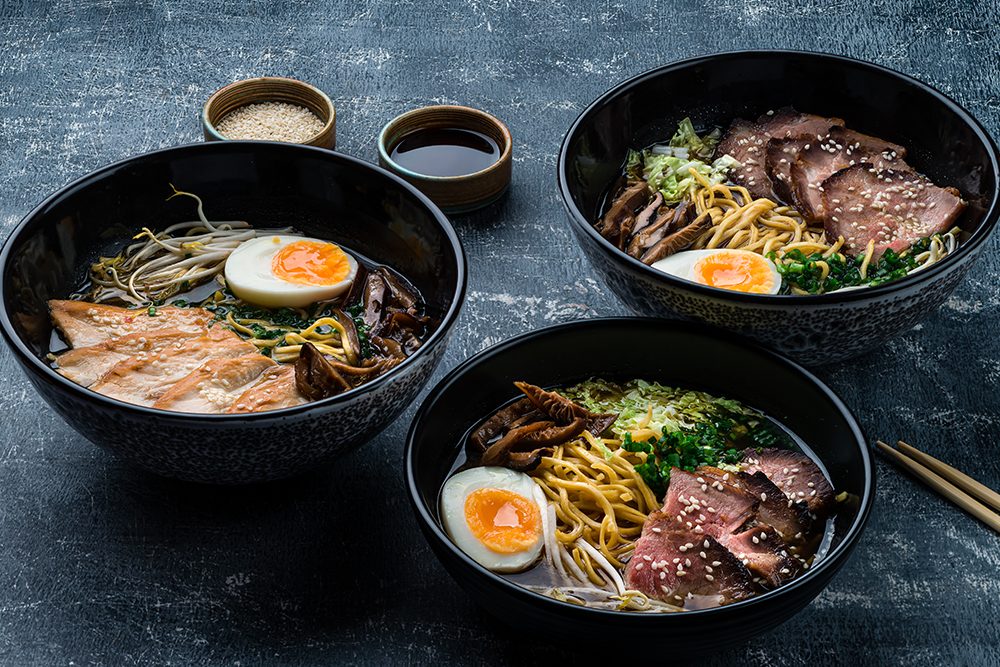
Shoyu Ramen dan Hidangan Olahan Mie Khas Jepang J Study
Although simple, this Japanese ramen broth carries the show with its caramel-colored hue and earthy saltiness. Shoyu ramen often includes tender slices of chashu (braised pork belly), menma (fermented bamboo shoots), finely chopped scallions and classic nori (seaweed). An optional marinated soft-boiled egg adds a creamy contrast to the savory.
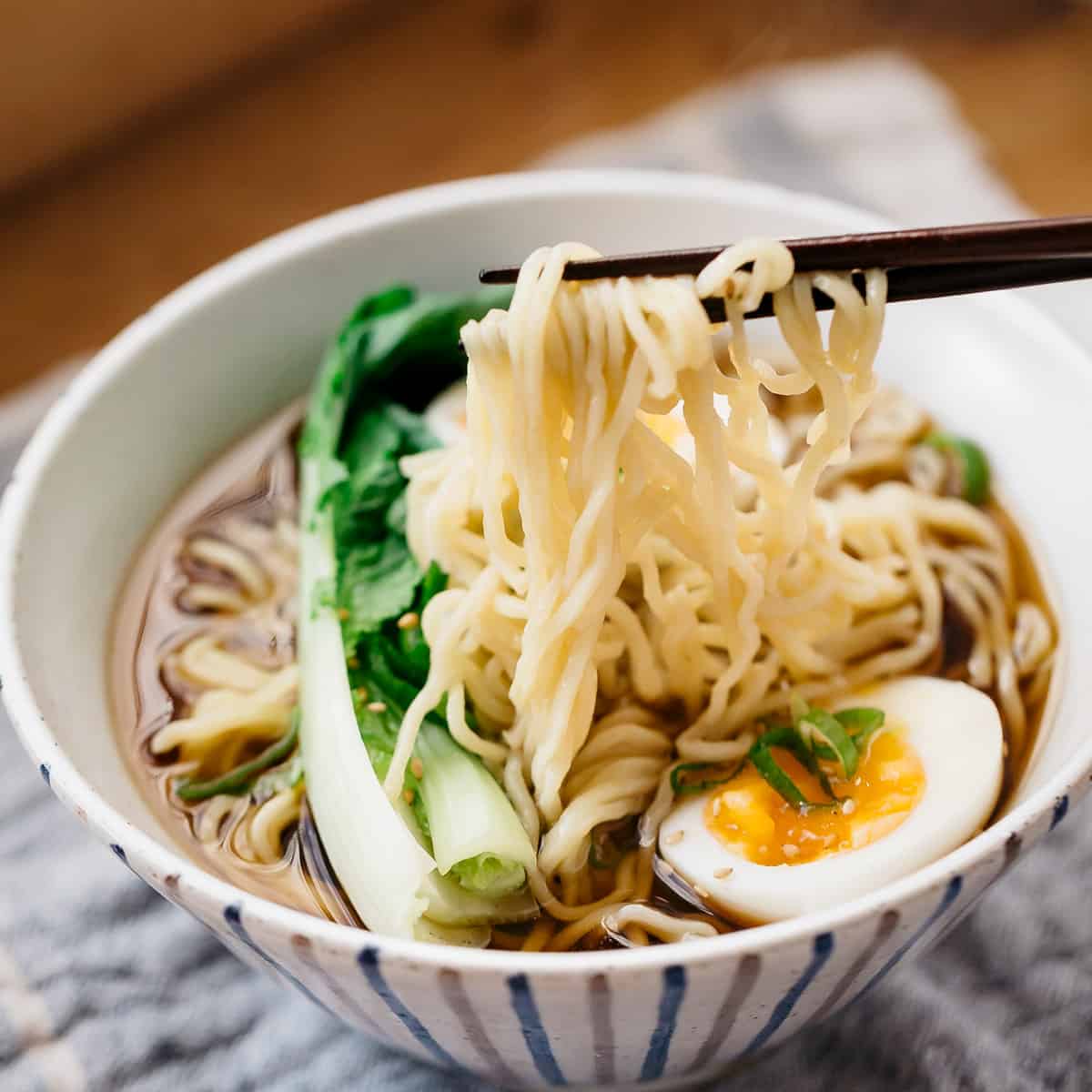
Shoyu Ramen (醤油ラーメン) Recipe An Easy Step By Step Guide Chopstick Chronicles
In Shoyu ramen, the broth is made with soy sauce, meaning, it is not merely added to the cooked broth, but infused into to the bones of meat (usually chicken), vegetables and water. Then everything is boiled and simmered to make a light brown broth. It has a light, herbal taste with saltiness of soy sauce, carrying around 475 kcal per bowl.

Difference between Miso Ramen and Shoyu Ramen SINGAREA UAE
Shoyu and Tonkotsu are two of the most popular ramen broths in Japan and beyond. Shoyu broth is made with soy sauce, while Tonkotsu broth is created by simmering pork bones. The two broths differ significantly in terms of flavor profiles, textures, colors, pairings, and preparation methods. Both broths offer unique and authentic experiences.

A Guide To Ramen Broth Shio, Shoyu, Miso and Tonkotsu Ramen broth, Ramen dishes, Asian recipes
Tonkotsu ramen is not actually a flavor of ramen but a broth style, and you can find miso tonkotsu ramen or shoyu tonkotsu ramen in addition to the classic tonkotsu style in ramen shops around the world. As you may well know, ramen broths can vary wildly, from thinner, more reserved flavors to brothless styles like tsukemen dipping ramen..
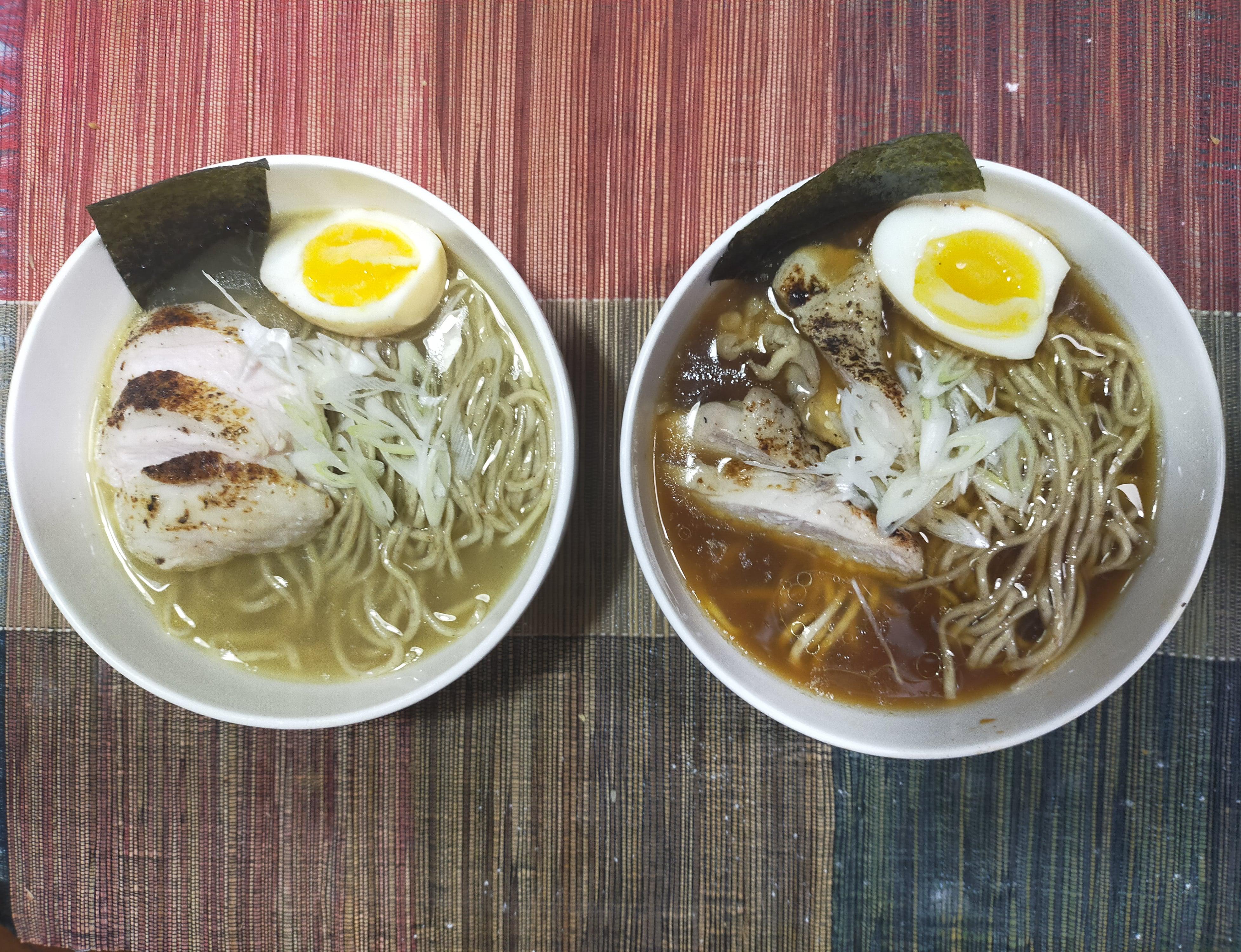
Test bowling shio and shoyu ramen Dining and Cooking
Boil hard for ten minutes. Strain the bones. Turn the tap on and bathe each bone in running water to remove all traces of blood and any dark matter. This is the key to making a milky broth. Start with plenty of water. Place the rinsed bones in the pot and cover with water twice or thrice the depth of the bones.
Shoyu VS Miso broths at Kairikiya (Kyoto Ramen Restaurant) please note the tasty eggs. ramen
Chasu Pork (Marinated Braised Pork Belly for Tonkotsu Ramen) Recipe. Miso Ramen With Crispy Shredded Pork. Soft-Boiled Eggs for Ramen Recipe. Mayu (Black Garlic Oil) for Ramen Recipe. Ramen noodles may seem simple at first blush, but from Tokyo style ramen noodles to Hakata style ramen noodles, complexities about.
Tried some Miso and Shoyu Ramen tonight. r/ramen
Ramen is a popular Japanese dish with various types of broths, and some of the most well-known varieties are Shio, Tonkotsu, Miso, and Shoyu ramen.Each type of ramen has its own distinct broth, resulting in different flavors and textures that appeal to different palates. Whether you prefer a light and savory option, a creamy pork-based broth, a sweet and tangy delight, or a classic soy sauce.
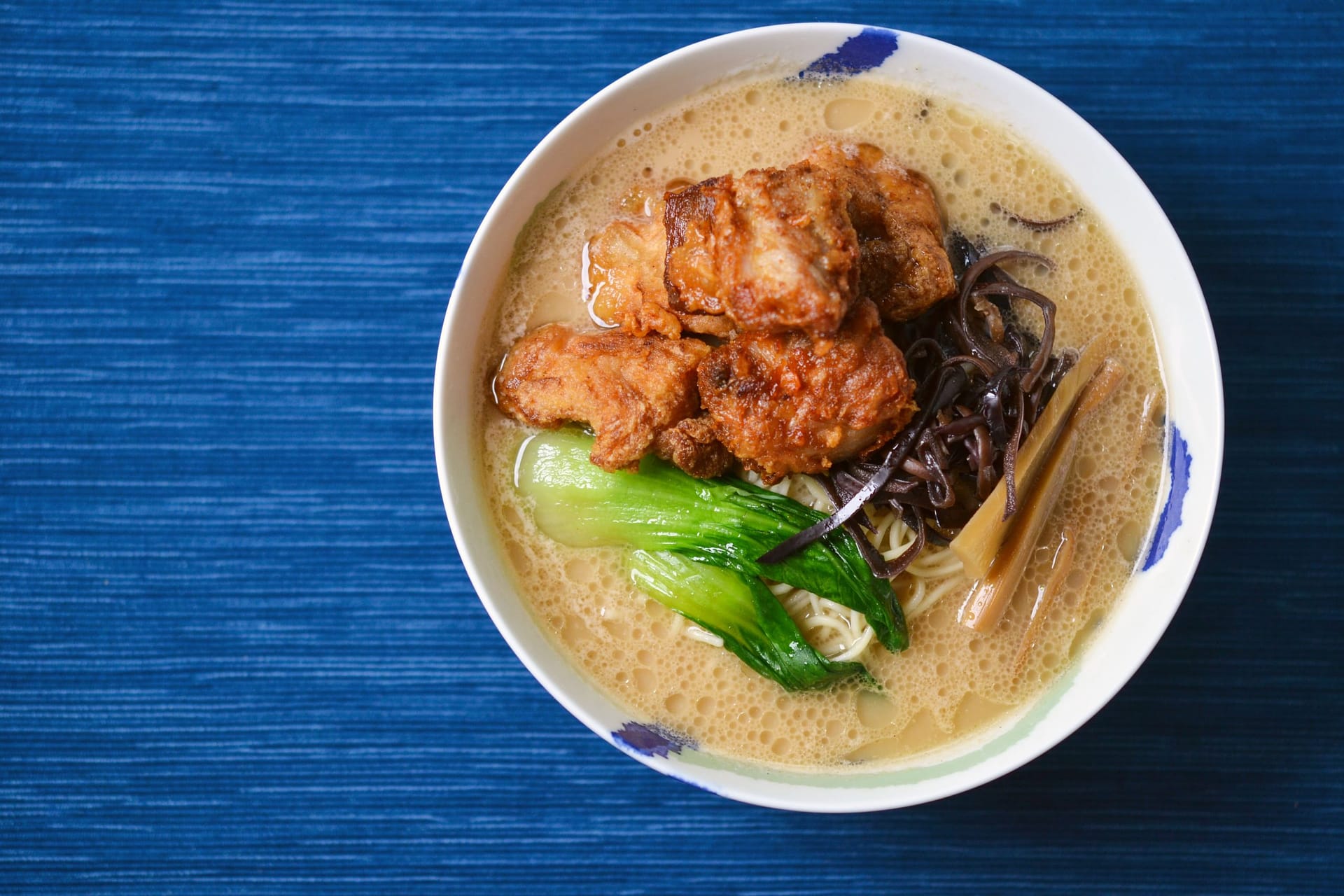
Signature Tonkotsu Shoyu Karaage Ramen Ramen Museum New York
Shoyu and miso have different consistencies. Shoyu comes in different varieties with a range of thicknesses, but all are liquid, while miso is always a thick paste. Shoyu and miso are produced in different ways. They are made using a mold called koji. Kojis break down starches and convert them to sugars that can be fermented.

RestaurantStyle Shoyu Miso Ramen Recipe Allrecipes
Understanding the differences in common ramen styles (miso, shoyu, shio etc) It seems in my area, the most common ramen style is tonkotsu, which is easy to understand because it literally means pork bone, and usually has a thick, fatty, usually pale white broth with a strong pork flavor.

Shoyu and Miso ramen for New Years! r/ramen
Tonkotsu ramen uses a pork-based broth, making it cloudy and milky in appearance with a very meaty flavor and a velvety texture. On the other hand, miso ramen uses fermented Japanese soy paste. It also has a thick soup base, but it is more hearty, savory, and slightly sweet. Let's look at all the differences between these two hardest ramen to.
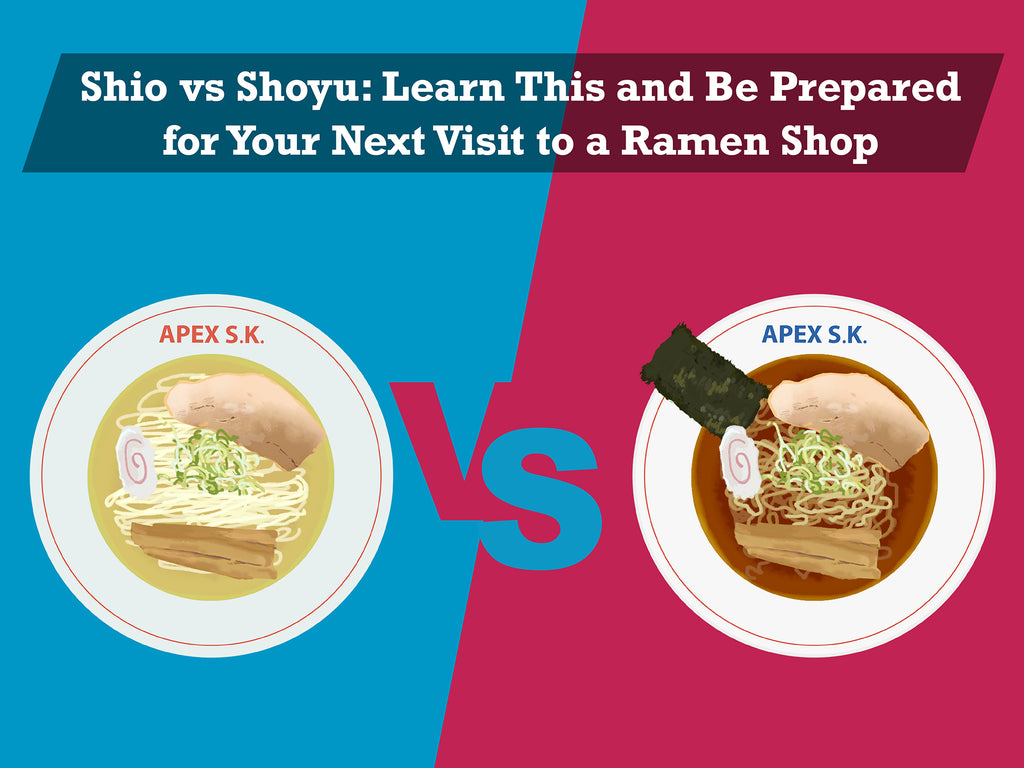
What's the difference between shio and shoyu ramen? [2022] QAQooking.wiki
In miso ramen, the noodles are typically thicker and chewier, allowing them to absorb the hearty miso-based broth and hold up well against the robust toppings. These noodles provide a satisfying bite and add a substantial element to the overall bowl. In contrast, shoyu ramen usually features thinner and straighter noodles.
- Holländische Süßigkeiten Die Es In Deutschland Nicht Gibt
- Alle Dagboeken Van Een Muts
- Wat Betekent De Naam Chloe
- Waar Is Taurine Goed Voor
- Leeft Eva Nog Van Over Mijn Lijk
- Moet Je Naar Het Ziekenhuis Als Je Gedrogeerd Bent
- Go Ahead Eagles Stadion Uitbreiding
- Win 7 Naar Win 10
- Route Tram 17 Den Haag
- Bèta Vakken En Alfa Vakken